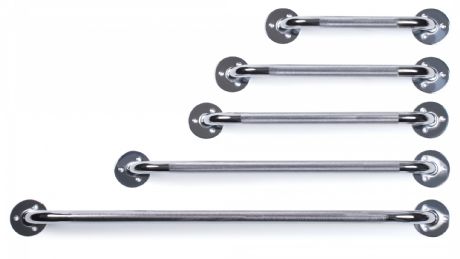
.jpg&newheight=260&quality=80)





















Who Needs a Grab Bar in the Bathroom or Bedroom?
Anyone with muscle weakness or mobility issues can benefit from the installation of grab bars in their home, especially the elderly, those recovering from surgery or illness and those with balance issues, arthritis or neuromuscular conditions such as cerebral palsy. Grab bars are also commonly found in hospitals, assisted living residences, nursing homes, public handicap-accessible restrooms and medical facilities.
Where Should I Place My Grab Bar?
The placement of wall-mounted grab bars depends on the size of the bathroom, the structure of the wall supporting the bar, the placement of the plumbing in the space and the physical traits of the user such as height, muscle strength and range of arm reach and whether there is a shower or tub in the space.
It is recommended that intended users practice getting in and out of the bathtub or shower before installation and have the installer mark the area where the user's reach is most comfortable for them.
In general, a vertical grab bar placed next to the shower or bath would work best for those who are able to stand with support while they are transferring into the bath or shower. An angled grab bar (generally placed at a 45 degree angle) would work for those who are using a shower seat and can stand briefly with support while washing private parts of their body. A horizontal bar placed next to a bathtub can help maintain balance while getting into or out of the bathtub.
Grab bars can also be mounted permanently by the toilet to help someone transfer from a wheelchair or walker to the toilet. A floor mounted pole or bedside grab bar can also be installed in the bedroom to assist with getting in and out of bed.
Whatever type of grab bar is chosen, it should be securely fastened to a wall stud or with a specially designed anchor. Those with arthritic hands often prefer a grab bar with a smaller circumference (usually around 1¼ inch) for easier gripping. Grab bars with a textured finish are often desirable in the bathroom to prevent hand slippage. The color of grab bar should not blend into wall or tile color so it can be easily seen by the user.
Rehabmart offers a wide selection of grab bars from such knowledgeable manufacturers as Stander, Medline, HealthCraft, Independence Medical, Triple Crown, Drive Medical, Maddak, Bridge Medical and Carex.
Hulet Smith, OT
Rehabmart Co-Founder & CEO
rh